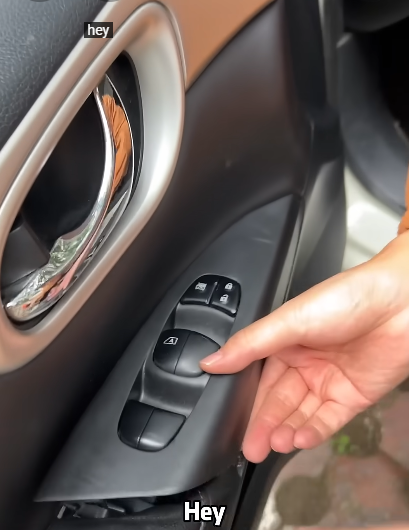
In today’s high-tech world, GPS tracking devices are commonly installed in vehicles for navigation, fleet management, theft protection, and monitoring purposes. Whether you’re trying to locate your own GPS device for maintenance, disable an unwanted tracker, or you’re simply curious, understanding how to find the GPS locator on a car is a valuable skill. This guide will walk you through the process step by step.
1. Understand What a GPS Locator Looks Like
Before you start looking, it’s important to know what a GPS locator might look like. These devices come in various shapes and sizes, but most are small rectangular boxes with a few wires attached. Some are wireless and magnetically attached, while others are hardwired into the car’s electrical system.
A GPS tracker may also include antennas, LED indicators, or even SIM card slots (for models that use mobile data). They’re usually black or grey to blend in with the car’s structure.
2. Start by Checking the Exterior of the Vehicle
The easiest place to hide a GPS locator is on the outside of the vehicle. These trackers are often magnetic and can be attached discreetly. Here’s where to check:
- Under the Car: Use a flashlight and a mirror if needed. Inspect the entire underside of the car, especially metal parts near the rear bumper or chassis rails.
- Wheel Wells: Some small trackers can be tucked behind the lining of the wheel wells.
- Inside the Bumper: A less common but possible spot. You might have to feel around the area or remove a panel.
- Under the Hood: Occasionally, trackers are placed near the engine bay or on the firewall.
If you see a small device that looks out of place or doesn’t belong to the car’s components, take a closer look.

3. Search the Interior of the Car
If the tracker isn’t on the outside, it’s probably inside. Focus on areas where wiring can be hidden or power can be easily accessed.
- Under the Seats: Many trackers are placed under the driver or passenger seat, especially if they’re plugged into a power outlet or hardwired.
- OBD-II Port: One of the most common places to find a GPS tracker. The OBD-II port is usually located underneath the steering wheel, near the dashboard. Many plug-and-play trackers are designed to insert here.
- Dashboard and Glove Compartment: Look for panels that can be removed or tampered with. A tracker might be concealed inside the dash with direct access to the vehicle’s power supply.
- Center Console: The area between the front seats is another location where a GPS device can be hidden.
- Trunk Area: Behind panels or under the spare tire, especially in vehicles with accessible rear compartments.
Use a flashlight and be thorough. If you’re not sure if a device is part of the car’s electronics, compare it to your vehicle’s service manual or search online for images of common GPS trackers.
4. Use a GPS Tracker Detector
If you can’t locate the device visually, consider using a GPS bug detector or RF signal detector. These handheld tools are designed to detect the radio frequencies emitted by GPS trackers and other wireless devices.
Here’s how to use one:
- Turn off all Bluetooth and Wi-Fi devices in the car (including your phone).
- Slowly move the detector around the car, paying attention to high-signal areas.
- If you hear beeping or see a spike in signal strength, inspect that area more closely.
Keep in mind that passive trackers (those that store data instead of transmitting it live) won’t emit signals until connected to a device, making them harder to detect.

5. Look for Wiring That Doesn’t Belong
If you suspect a GPS device is hardwired, follow the car’s wiring to spot anything unusual. Aftermarket installations usually don’t look as clean or integrated as factory-installed components.
Watch for:
- Wires that are taped or zip-tied outside of the factory harnesses.
- Spliced or connected wires using unfamiliar connectors.
- Devices tucked behind kick panels, under the dashboard, or in the fuse box area.
Be cautious not to damage your vehicle’s electrical system while inspecting or removing parts. If you’re not experienced with automotive wiring, it’s best to consult a professional.
6. Check the Vehicle’s Manual or Consult a Mechanic
Some vehicles come with factory-installed GPS systems. These are usually integrated into the navigation or infotainment system and are not removable. If your car has a telematics system (like OnStar, BMW ConnectedDrive, or Toyota Safety Connect), it already has a built-in GPS module.
To confirm this:
- Check your owner’s manual for information about navigation or location services.
- Look in the dashboard display menus under system settings or vehicle info.
- Contact your dealership to ask if your specific model has built-in tracking.
If you can’t find anything yourself and you’re still unsure, a qualified mechanic or auto electrician can inspect the vehicle more thoroughly.

7. Legal and Safety Considerations
Before you attempt to disable or remove any GPS tracking device, consider the legal implications:
- Your Vehicle, Your Right: If you own the car outright, you have every right to locate and remove any unwanted tracking devices.
- Leased or Financed Vehicles: Some lenders install GPS trackers to monitor their asset. Removing the device may violate your loan or lease agreement.
- Employer Vehicles: If you’re driving a company car, it may legally have a tracker installed. Check your employment agreement or company policies.
- Stalking or Harassment Concerns: If you find a tracker you didn’t install and suspect foul play, contact law enforcement. It’s illegal in most places to track someone without consent.
Always handle suspected tracking with caution, especially if it may involve legal issues or personal safety.
8. How to Remove or Disable a GPS Locator
Once you’ve found the GPS locator, removing it depends on the type:
- Plug-in GPS Trackers (OBD-II): Just unplug it. These are the easiest to remove.
- Magnetic/Wireless Trackers: Remove it from the vehicle’s exterior and turn it off if there’s a switch. You can also place it in a signal-blocking bag or wrap it in aluminum foil.
- Hardwired Trackers: Only remove if you are confident with vehicle electronics. Disconnect the power source, usually a connection to the battery or fuse box.
In all cases, be sure the device isn’t part of your car’s safety or emergency system before removal.

Final Thoughts
Finding a GPS locator on your car can be a straightforward process with the right knowledge and tools. Start with a visual inspection, use electronic detectors if needed, and consider professional help for deeper investigations. Whether you’re checking for unauthorized tracking or just trying to understand your vehicle better, knowing where to look is the key.
Remember: your privacy matters. Stay informed and stay in control.



